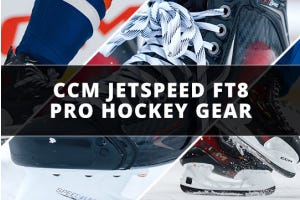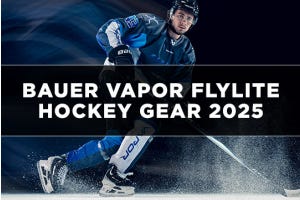Hockey Equipment Guides & Pro Tips
Looking for the perfect gift for the hockey player in your life? Our 2025 Holiday Hockey Gift Guide has you covered with the best ice skates, sticks, gloves, helmets
The Bauer PROTO2 hockey stick sets a new benchmark for elite players in 2025. With its mid-kick design, upgraded blade core, and use of boron fiber, it blends explosive
The CCM JetSpeed FT8 Pro line continues CCM’s tradition of making gear for the player who wants a true all-around setup. Whether it’s the explosive energy in the
Bauer’s Vapor line has always been synonymous with quickness, agility, and elite-level responsiveness—and the 2025 Bauer Vapor Flylite line pushes that identity
Looking for the best junior hockey sticks in 2025? Whether your young player is just getting started or already making an impact on the ice, the right stick can
Pickleball is one of the fastest-growing sports in the world, and MonkeySports is excited to bring you a full lineup of pickleball gear! Whether you’re a beginner
In this article, we will disucss:
Choosing the right size of shoulder pads is crucial for any hockey player. Warrior, a renowned name in sports equipment, offers a variety of high-performance
Maintaining clean goalie gloves is crucial for optimal performance on the ice. Clean gloves ensure a better grip on the puck, which is essential for making saves
Maintaining clean goalie gloves is crucial for optimal performance on the ice. Clean gloves ensure a better grip on the puck, which is essential for making saves
Backchecking is a critical aspect of hockey's defensive play. It refers to the efforts of players, usually forwards, hustling back toward their defensive zone to
Unlocking your full on-ice potential starts with the right equipment. When it comes to hockey sticks, choosing the ideal curve and blade pattern is crucial for maximizing
Hockey referees play a critical role in promoting fair play, sportsmanship, and enforcing the rules of the game. Their presence ensures the integrity of the sport,
CCM is dedicated to quality, offering a robust warranty on its hockey equipment to ensure customer satisfaction. This guide will cover the essentials of CCM's warranty
One of the most common questions for first-time hockey game attendees is, Are hockey games cold? The answer is yes, but the level of cold can vary depending on factors
Heat press printing has become a game-changer in the world of customization, offering a quick and efficient way to personalize apparel and merchandise. In the fast-paced
Heat press printing has become a game-changer in the world of customization, offering a quick and efficient way to personalize apparel and merchandise. In the fast-paced
Screen printing, a time-tested method with a rich history, remains a dominant force in the world of garment decoration. While newer technologies emerge, screen
Baking CCM hockey skates is a process that enhances comfort and provides a custom fit by softening specific skate materials to mold to your foot shape. This procedure
Ice hockey rink lines are critical to understanding the flow and strategy of the game. These lines define zones, regulate player positioning, and dictate several
Photo: NHL
In the high-speed world of professional hockey, stick selection plays a vital role in performance. Auston Matthews, one of the NHL’s most elite goal-scorers,
Bauer is a top choice for hockey skates, and regular maintenance, including changing your blades, is essential for keeping them in peak condition. This guide will
Junior hockey is crucial for developing young players in America (21 and under), providing a pathway to higher levels of competition, including collegiate and professional
In this article, we will disucss:
You may be asking... What exactly IS Sublimation? Sublimation is a traditional printing method in which a computer printer uses heat to transfer dye directly into








